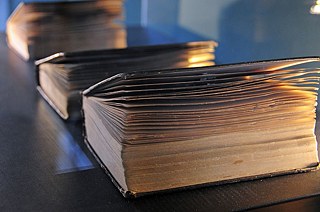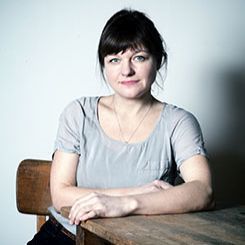Interview with Edith Kollath
Art of Air: “The most normal thing, yet the most divine”

Instead of producing new objects, Edith Kollath is interested in changing the state of existing material. The multimedia artist talks to Gabriele Urban about what inspires her work and what she expects from the exhibition in Melbourne.
Tell us a little bit about your work in general. What kind of media do you preferably use? What does your creative process look like?
As a conceptual artist, usually the question I’m working on leads me to the medium or materiality most adequate. So I’m using diverse media, including video, installation, performance, objects, and paper with an interest in searching for transformation processes, movements — real and potential, and fragile or unstable states. In my research I often circle around in the labyrinth of possibilities and create intuitive experimental settings that are like spider webs for me, in which I hope something interesting will entangle.
The unpredictability of this method makes my work so adventurous: failures, disappointments, surprises, hope, encounters and gained knowledge are part of the process. This has just recently been the case, when I was looking for a certain form of vessel in a glassblowing workshop. By chance I found something very different and fascinating — and I had to react to it, which is why I’m currently developing a video for the upcoming exhibition.
When did you first come across air as an artistic medium? What fascinates you about the element and what are you trying to express using air in your art?
Actually, I first became aware of breath when it stopped functioning for me. It is an invisible and intangible medium that escapes our perceptibility as long as it works properly. Many years ago I experienced some breathlessness and light respiratory problems due to stress, which was an existential physical experience. This led me into physical breath practices and further research.
Interconnected concepts
In many cultures, religions and spiritual practices breath has been conceptualised in different ways. From ancient Greek philosophy and science to Indian and Chinese traditional practices, the study of breath and how it unites the body with the environment as well as the corporal dimension of being with the mind and soul were at the core of interest. When you look at the word’s origin, it already shows the dimension of this subject: in both the Greek and the Indian language, the concepts of breath, air, spirit and soul are interconnected and their meanings are interdependent.It is absolutely fascinating that air is an element that we can never fully appropriate. We can simply exist within it, use it to sustain our body and spirit, and share it with others. Breathing on the one hand unites us with the others, while on the other hand it emphasises our individuality. It generates proximity and distance at the same time: How do we experience this within the cyclic processes? To deal with breath within my artistic practice means to focus rather on process than on objects and on experience instead of appearance.
Breath. All of us need to breathe, so for most of us it’s the most normal thing in the world. In your creations you play with the element of breath, for example in your artwork breathing books. What is it that you find so intriguing about breath?
Yes, it is the most normal thing and yet the most ‘divine’. The series thinking I’d last forever consists of antiquarian books that seem to be breathing in individual rhythms. Their covers are raised and lowered thereby unfolding the pages. The breathing books are showing a fragile and intimate side of existence to an extent that they create a sensation of empathy in the viewer. As the ubiquitous presence of air becomes an absence and allows us to forget it so easily, the breathing books become a reminder and dissolve the visual sense into an awareness of our body.
Between reluctance and affection
The ‘duet’ between antiquarian editions of a Bible and a Koran form a special communicative structure within this series: the holy books face each other with their vulnerable sides and yet lie side by side in their correct reading direction. They open and close gently in individual rhythms, which are synchronous, then again asynchronous, exposing a moving intimacy between them.In my artistic practice I noticed that all works that are in one way or another connected to breath, polarise the audience: almost no one is indifferent, the reactions vary between absolute reluctance and strong emotional affection.
Is there an idea or a theme that follows you throughout your artistic career and that one can find in all of your artworks or was each piece developed individually? Is there something that continuously inspires and fascinates you?
I am a very curious person. As a child I’d walk around our village with a friend and we would just randomly ring doorbells in order to find out who lives behind the fence and what it looks like over there. We usually got invited for hot chocolates. I still really enjoy new encounters and the thrill of discovering new things: by travelling and in interdisciplinary exchanges for example.
Currently, I am researching the broad phenomenon of contingency, which is quite inspiring to me. We call something contingent, when it is possible in another way as well and it describes the uncertainty of future events and acts, which can be experienced for example in moments of levitation and hesitation — on individual and collective levels. Especially when you want to find out something new — in science or artistic research — it’s the question of how we act into the unknown. Are there artistic strategies that can be useful in other contexts as well? To deal with risks in society has produced management strategies like probability calculations. Those have now moved into the digital realm into algorithmic divination. What does that mean for us? These questions are interesting for multiple discipline: from sociology to philosophy, from politics to futurology and many more. I believe I have a lot of work and room for interesting exchanges for the years to come and I am very curious what I’ll experience in Melbourne.
EDITH KOLLATH


